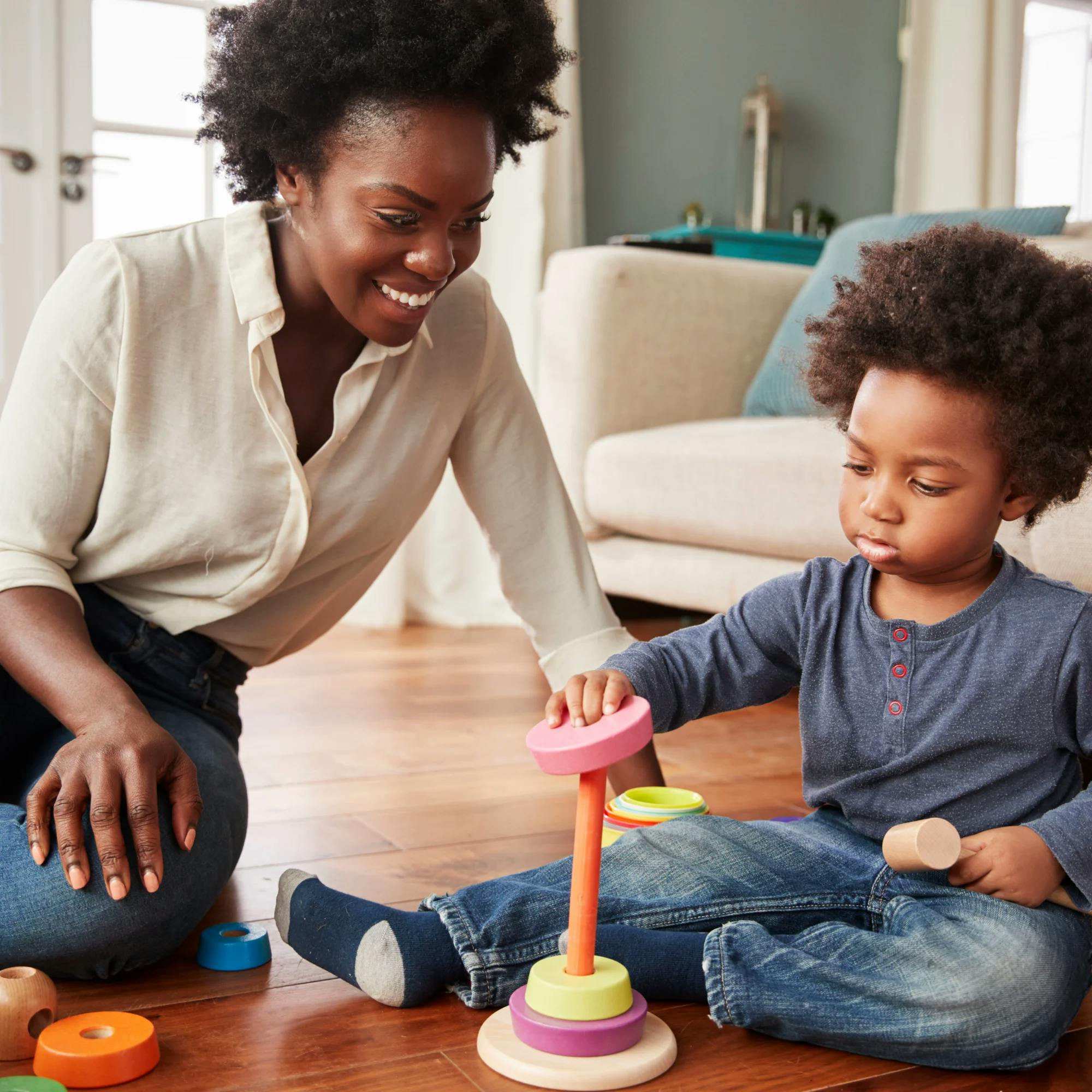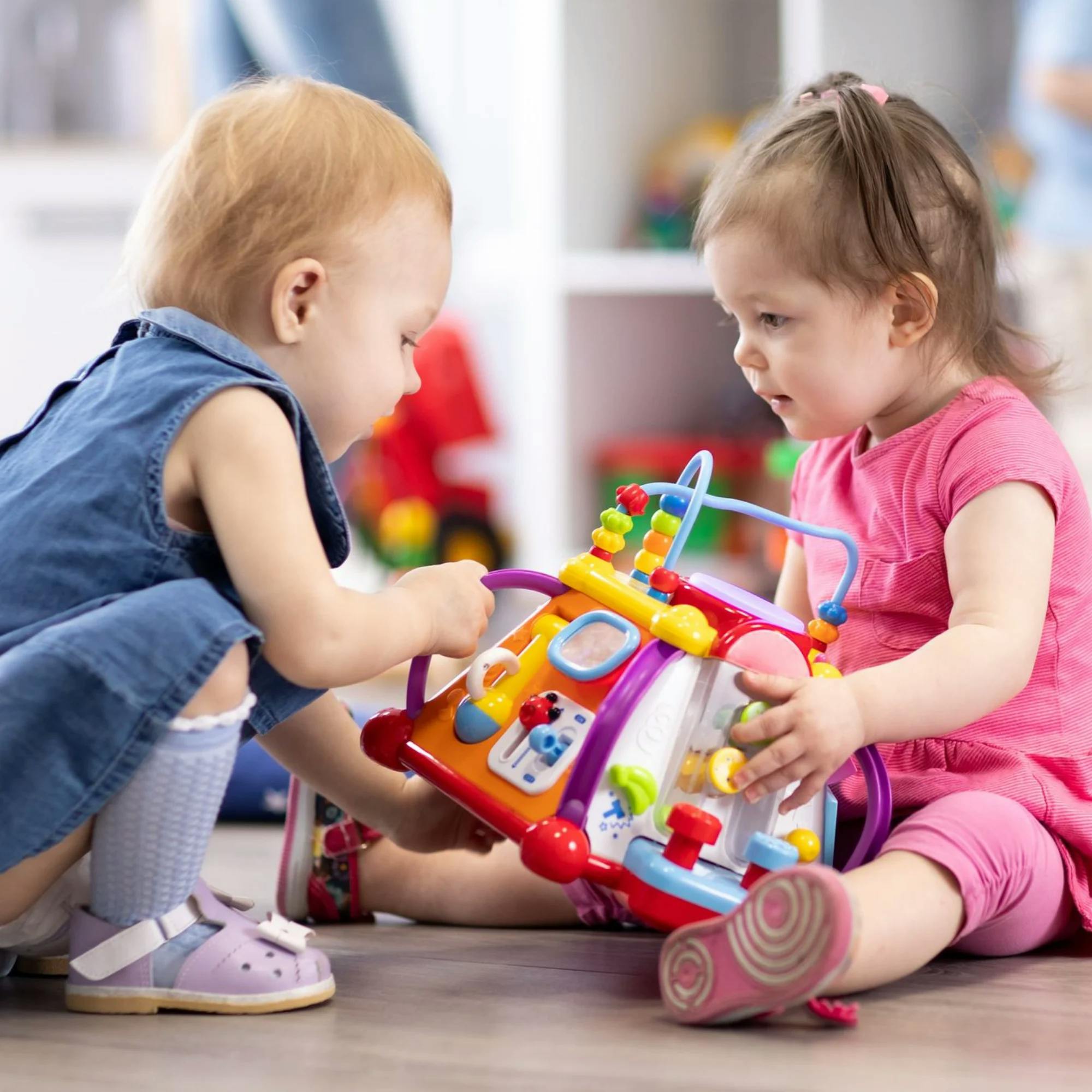
What Are Social Pragmatics, or Social Communication Disorders?
 Alexis Irazoque, M.S., CCC-SLP
Alexis Irazoque, M.S., CCC-SLP
Think about all the different “social rules” we use every day when communicating with others. We greet our conversational partners, maintain eye contact, wait for our turn to speak, stay on topic, etc.
This ability to use appropriate communication in various social situations and contexts is known as pragmatic language. It involves knowing what, how, and when to say certain things.
When social communication is challenging
While these conventions may seem obvious or second nature to some, many children and adults struggle with pragmatic language. This can make it a challenge to hold conversations and form healthy social relationships with friends, family, and coworkers.
We are taught the basics of pragmatic language from a very early age. However, the demands of communication grow as we age, and conversations become more complex. This requires a certain awareness and practice of social pragmatics, just as we acquire any other skill.
It’s important to know that people who struggle with social communication do not have a problem with their speech, such as pronouncing sounds and words. They also don’t have difficulty understanding language, like the meaning of words or using correct grammar. And they are definitely not any less intelligent than their peers. People who struggle with social skills simply need some extra help understanding the verbal and nonverbal rules of a conversation.
People who struggle with pragmatics need help interpreting the verbal and nonverbal rules of a conversation.
In this article, we're going to cover the basics of social pragmatics and how you can improve these vital, life-long skills with your child. We'll also discuss how speech-language pathologists recognize what these pragmatic needs are throughout all the stages of life--from infancy to adulthood--and regularly help individuals improve their communication, no matter what the setting.


Major categories of social pragmatics
Pragmatics can be broken down into three major categories:
1 Using language for different purposes
Whether we're asking questions, saying hello, or making a statement, we all use different types of language throughout our daily lives.
Greeting someone: “Hi,” “Bye,” “How are you doing?”
Requesting something: “Can I have a snack please?”
Making declarative statements: “I am going to the store.”
Stating a demand: “Wash your hands, please.”
2 Changing language based on the conversation partner or situation
From close friends to first-time encounters, we speak differently and change our language depending on who we're engaging.
Talking to a school friend vs. talking to a teacher
Speaking on the bus vs. speaking in the classroom
Talking about a family member or a parent vs. a stranger
3 Following the rules of a conversation
Following the "rules of communication" helps individuals become good conversational partners. If we regularly monopolize a conversation, interrupt, or seem uninterested based on our eye contact or facial expressions, we run the risk of coming off as rude or indifferent.
Taking turns while speaking (not interrupting others mid-sentence)
Repeating ourselves if we’re misunderstood
Introducing new topics, staying on topic, and continuing the subject with a conversational partner
Interpreting and using nonverbal cues, such as eye contact, body language and facial expressions
Respecting personal space


Why is social communication so important?
Pragmatic skills are how we navigate through life, communicate our wants and needs to others, and express our thoughts and opinions verbally.
They include important building blocks of communication that include eye contact, joint attention, turn taking, and sharing. Without these fundamental skills, pragmatic communication can be challenging.
If a child has a tough time making eye contact, maintaining their attention while a speaker is talking, or taking turns during a conversation, they may have breakdowns in communication throughout their lives that can persist in school to the workplace. They may also have trouble developing social skills needed to make friends and have healthy relationships.
Fortunately, there are many simple techniques you can do with your child in their infant years to begin establishing strong social pragmatics.


Why do some people struggle with social pragmatics?
Difficulty with social pragmatics (which you may hear referred to as a social communication disorder, or pragmatic language impairment) is relatively common, yet there is no definite cause as of today.
Some studies have shown that a child may be more likely to develop a social communication disorder if they have a family history of autism spectrum disorder (ASD), a learning disability, or any other type of communication-related disorder. Additionally, it can also occur alongside other types of disorders, such as a speech delay, ADHD, or an intellectual development disorder.


What are some signs of a social communication disorder?
For children struggling with social pragmatics, you may notice some of the common signs below. Keep in mind that all children are different, and it's important to speak with your pediatrician or a speech therapist if you notice your child struggling.
Not understanding the concept of turn-taking when talking
Regularly interrupting or speaking over someone
Not able to interpret the nonverbal cues of the listener, such as their facial expressions
Difficulty staying on the topic established by their conversational partner
May have trouble answering questions relating to the topic
Can't interpret jokes, riddles, or figures of speech
Struggles to understand the main topic of a story or conversation


Building strong social pragmatic skills from an early age
From the moment your baby is born, here are some simple ways you set a strong foundation for social pragmatics.
Eye contact
Parents bond with their infants and share those moments of recognition from birth. This skill may sound basic but it is essential for pragmatics. Establishing eye contact with a conversational partner lets them know you're interested and engaged in an exchange. A listener might feel awkward if a person initiates conversation but is looking away or at the floor.
Making silly faces and sounds, singing to your baby, and playing “peek-a-boo” are all ways to work on increasing eye contact.
While we don’t expect anyone to look directly into our eyes for the entire length of a conversation, establishing and maintaining appropriate eye contact is a fundamental pragmatic skill. As your child ages, it’s important to regularly monitor how well they maintain eye contact. Causes for concern can include:
Does your child establish eye contact when greeting with “hi” or “bye”?
When you are speaking with your child, do they look directly at you? Or does it feel like they're looking through you or somewhere else in the room?


Joint attention
Joint attention is when two people are focused on the same object, person, or activity.
The ability to focus on the same item as another person is a crucial building block of healthy communication development. We take turns exploring a toy and sharing it together the same way we take turns and share in a conversation.
For a baby, this could entail sharing a favorite stuffie and using it together to make it sneeze “ah choo.” Another example is looking at a book together and pointing to objects and naming them on the page.
The ability to focus on the same item as another person is a crucial building block of communication development.
A child who has difficulty establishing joint attention may also struggle communicating with another person, as they will find it challenging to focus on the same task as their conversational partner. This natural back-and-forth exchange doesn’t happen effectively if joint attention is not established.
One simple way to practice joint attention is by rolling a ball back and forth with your child. Not only will you both be focused on the same task, you can use this activity to establish eye contact and turn taking as well.
More ways to promote social communication at home
There are so many fun and engaging activities you and your child can do at home to improve their social pragmatic skills. Try these out today!
Practice greetings like “hi” and “bye” each time you start or end a conversation.
Establish eye contact with your child before speaking.
Read regularly with your child, making sure to encourage discussion by asking open-ended questions: "Why did that happen?" "Who's your favorite character?" "Why was that character so upset?" Focusing on how certain characters are feeling and why is a great way to help children associate these feelings with similar situations in their life.
Practice nonverbal cues such as smiling, frowning, and looking away. Try to ask your child to interpret the meaning of each.
Play turn-taking games, like rolling a ball or board games, so you child gets in the habit of this back-and-forth exchange.
Role play by having your child pretend to have the same conversation with different people. For example, how would your child explain their favorite toy to a baby, or a teacher, or their grandparents? Discuss what’s appropriate to say and not say depending on each listener and situation.
Ask a child to retell a common story or describe their favorite movie.


How can speech therapy help with social pragmatics?
If you suspect your child is struggling with social pragmatics, consulting a speech-language pathologist, or speech therapist, and obtaining an evaluation is a great place to start. Your speech therapist can pinpoint in what areas of communication your child may need extra help.
For a toddler, this might be establishing those early skills such as eye contact, joint attention, and sharing through play therapy. For an older child, it could mean learning how to interpret facial gestures, turn taking, and sharing.
Without those fundamental skills, more complex demands such as starting a conversation, maintaining a topic, interpreting nonverbal cues, respecting personal space, and texting and sharing appropriately online may be difficult to achieve.
A speech therapist isn’t just limited to working on pragmatic skills with toddlers and young children. These skills are important at all stages of life. The pressures of communication for a teenager or adult can be overwhelming as they navigate school or employment. If a person has communication anxiety related to their daily conversations, they might avoid situations altogether, such as meeting new people or searching for a new job.
A speech therapist can help them develop strategies to build confidence and to engage in easier communication depending on their ultimate goals.
Check out this helpful resource for more information about social pragmatics and social communication disorders: A Guide to Social Communication Disorders
How Expressable Can Help
Concerned your child isn't reaching age-expected milestones? Looking for communication support from a professional? Expressable is a national online speech therapy practice serving children and adults. We treat all major areas of communication and feeding, offer flexible hours including evenings and weekends, and accept most major health insurance plans. We’re proud to have earned more than 3,000 5-star reviews from our clients (4.9/5 average).
Our therapy model is centered on parent and caregiver involvement. Research proves that empowering caregivers to participate in their loved one’s therapy leads to better outcomes. That’s why we combine live, 1-on-1 speech therapy with personalized education and home practice activities for faster progress.
Communication is more than words. It’s how we share how we feel and show who we are. We’re here to help you or your child do just that.









